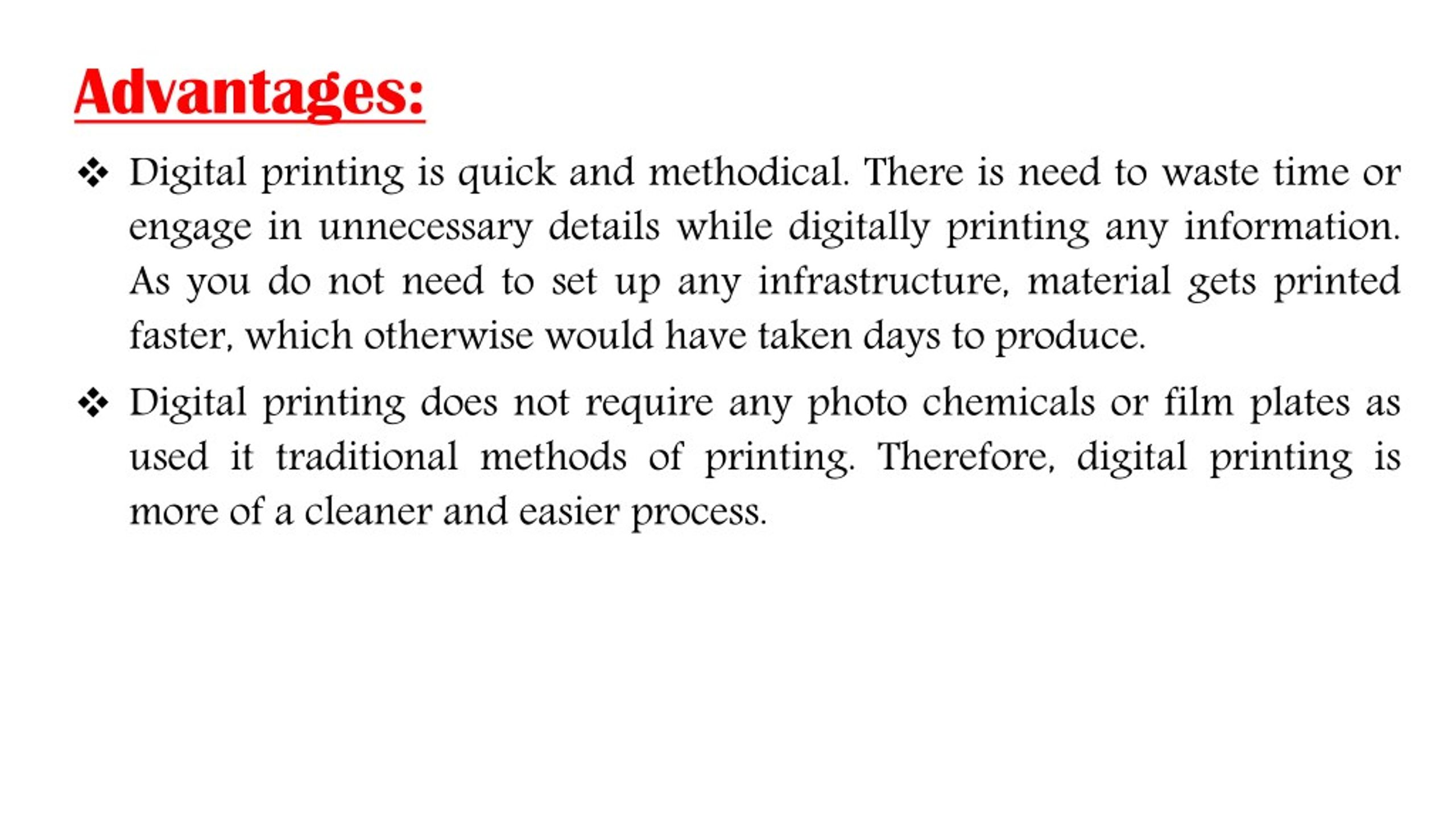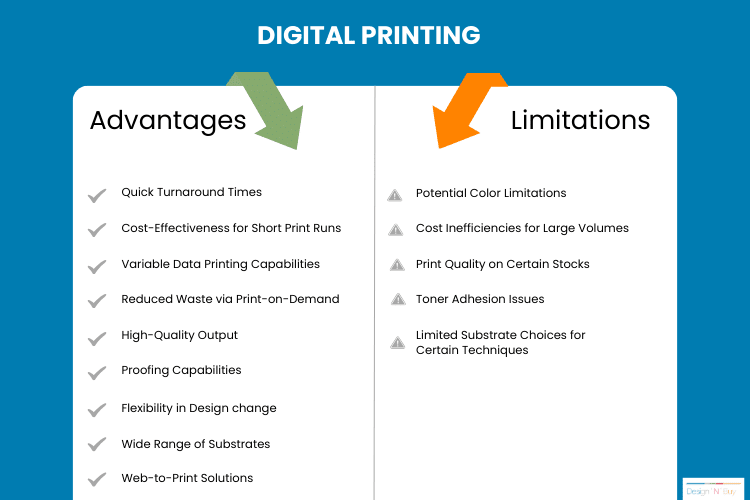The Basic Principles Of Digital Printing
The Basic Principles Of Digital Printing
Blog Article
10 Simple Techniques For Digital Printing
Table of ContentsFacts About Digital Printing RevealedA Biased View of Digital PrintingThe 7-Second Trick For Digital PrintingThe 30-Second Trick For Digital PrintingSome Ideas on Digital Printing You Should Know10 Simple Techniques For Digital Printing
Variable information printing, such as direct mail with personalized codes and addresses, is ideally matched for digital printing. Digital fast printing only requires four actions of style, evaluation, printing and binding to obtain every little thing done. Digital quick printing has an unrivaled benefit: print on demand.According to PMMI, digital printing allows brands and makers to react promptly to customer demands while enhancing the supply chain, decreasing warehousing expense and waste, and delighting in faster time to market. That all noises excellent, however how does this innovation do all that? The major differentiator of these innovations is that there are no set up charges and no plates with digital printing.
Digital Printing for Beginners
This results in quicker turn-around time and reduces price when making use of digital printing.
Speedy production implies getting your item to market faster. It also implies it's less complicated and faster to make adjustments in the future, when you alter a dish, add a SKU, or develop seasonal product packaging. Digital printing is extremely adaptable, so it's very easy to make modifications to the package design rapidly. It all goes back to the plates.
With traditional printing techniques, short-run printing is simply not possible. Due to the fact that a great style can make or damage your product, digital printing regularly creates top notch, clear and vivid graphics each time.
Digital printing is the procedure of printing digital-based images straight onto a range of media substratums. There is no need for a printing plate, unlike with offset printing. Digital data such as PDFs or desktop computer publishing documents can be sent out straight to the electronic printing machine to publish theoretically, picture paper, canvas, fabric, synthetics, cardstock and other substratums.
Unknown Facts About Digital Printing
According to PMMI, electronic printing permits brand names and manufacturers to respond swiftly to client demands while enhancing the supply chain, decreasing warehousing cost and waste, and enjoying faster time to market. That all noises fantastic, however exactly how does this technology do all that? The significant differentiator of these innovations is that there are no set up costs and no plates with electronic printing.
According to Wikipedia, the biggest difference in between electronic printing and conventional methods such as lithography, flexography, gravure, or letterpress is that there is no need to replace printing plates in digital printing, whereas in these analog printing approaches home plates are repeatedly replaced. This causes quicker turnaround time and reduces expense when using digital printing.

The Ultimate Guide To Digital Printing
With standard printing techniques, short-run printing is simply not feasible. Due to the fact that an excellent design can make or damage your product, digital printing consistently develops top quality, clear and vibrant graphics each time.

According to PMMI, her explanation electronic printing permits brand names and manufacturers to respond rapidly to consumer website link demands while boosting the supply chain, decreasing warehousing expense and waste, and taking pleasure in faster time to market. That all noises fantastic, but just how does this modern technology do all that? The major differentiator of these innovations is that there are no set up fees and no plates with digital printing.
What Does Digital Printing Mean?
According to Wikipedia, the best difference between electronic printing and conventional methods such as lithography, flexography, gravure, or letterpress is that there is no requirement to replace printing plates in electronic printing, whereas in these analog printing approaches home plates are repetitively changed. This leads to quicker turn-around time and decreases cost when utilizing electronic printing.
Speedy production implies obtaining your item to market much faster. It additionally means it's much easier and faster to make modifications in the future, when you alter a recipe, add a SKU, or develop seasonal product packaging. Digital printing is extremely versatile, so it's simple to make changes to the plan style rapidly. All of it goes back to home plates.

The Single Strategy To Use For Digital Printing
Digital printing is the procedure of printing digital-based images straight onto a selection of media substrates. There is no requirement for a printing plate, unlike with balanced out printing. Digital files such as PDFs or desktop publishing data can be sent out straight to the digital printing press to print theoretically, picture paper, canvas, textile, synthetics, cardstock and other substratums.
Report this page